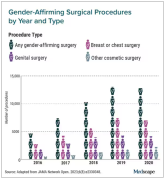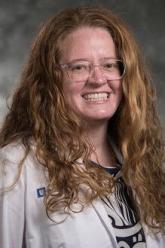News
Higher Dose of Naloxone Has No Impact on Overdose Survival; Increases Withdrawal Symptoms
- Author:
- Robert Fulton
Opioid withdrawal signs, including vomiting, as well as anger and combativeness were higher with the higher dose of naloxone.
News
Growing ‘tranq’ threat poses challenges for PCPs
- Author:
- Robert Fulton
“Xylazine is making the deadliest drug threat our country has ever faced, fentanyl, even deadlier.”
News
Surge in pediatric ADHD med errors prompts call for prevention
- Author:
- Robert Fulton
The most common scenario was “inadvertently taken or given medication twice.”
News

Gender-affirming surgeries nearly tripled between 2016 and 2019: Study
- Author:
- Robert Fulton
“The point of this [study] is to raise awareness and to really document the patterns of care in the United States.”
News
Continuous glucose monitors for pregnant patients?
- Author:
- Robert Fulton
The benefits of these technologies for patients with gestational diabetes are unclear in consideration of the...
News
Partial immunization leaves children and communities at risk, study finds
- Author:
- Robert Fulton
The strongest association with not completing the vaccine series was moving across state lines and not having insurance.
News
USPSTF maintains ‘insufficient evidence’ for lipid disorder screenings in kids and teens
- Author:
- Robert Fulton
“There’s just not enough evidence to determine whether or not screening all children for high cholesterol improves their heart health into...
News
All in stride: Few age limitations for joint replacement
- Author:
- Robert Fulton
Primary care physicians should ask patients if the pain affects their day-to-day lives and if they were unresponsive to nonsurgical treatments...
News
CPAP not only solution for sleep apnea
- Author:
- Robert Fulton
Most commonly, obstructive sleep apnea involves the cessation or significant decrease in airflow while sleeping.
News
Can you spot hypermobility spectrum disorder?
- Author:
- Robert Fulton
“I think a lot of these patients were diagnosed with fibromyalgia,” Dr. Carroll said. “It’s incumbent upon us to be able to start teasing some of...
News

Misoprostol only for abortion: Viable option but not ‘the best’
- Author:
- Robert Fulton
Misoprostol is less effective on its own and has more pronounced side effects.
News

Study: Prenatal supplements fail to meet nutrient needs
- Author:
- Robert Fulton
“There is no magic pill. There is no easy answer here.”
News
Spotting STIs: Vaginal swabs work best
- Author:
- Robert Fulton
Despite the CDC’s recommendation, urine analysis for STIs is more commonly used than vaginal swabs among U.S. health care providers.
